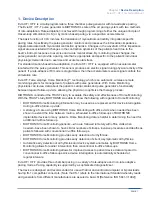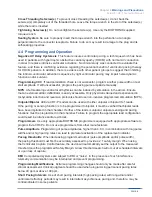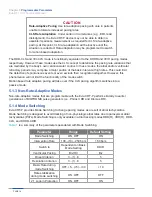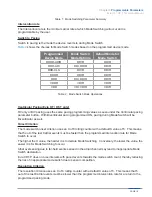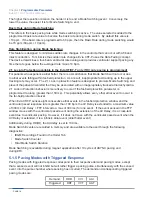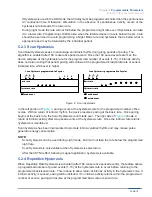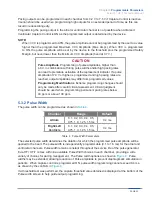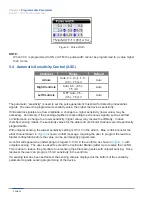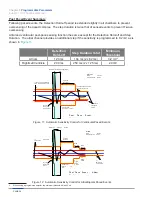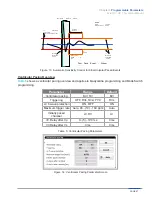
Chapter 5
Programmable Parameters
Evia HF / HF-T Technical Manual
PAGE 14
CAUTION
Rate-Adaptive Pacing
Use rate-adaptive pacing with care in patients
unable to tolerate increased pacing rates.
CLS Rate Adaptation
Under certain circumstances (e.g., EMI, lead
dislodgment), the Evia CRT-P device may not be able to obtain a
useable impedance measurement as required for CLS rate-adaptive
pacing. At this point, CLS rate-adaptation will be inactive until the
situation is corrected. Rate-adaptation may be programmed to switch
to motion based adaptation.
The DDD-CLS and VVI-CLS mode is functionally equivalent to the DDDR and VVIR pacing modes,
respectively. However these modes use the CLS concept to determine the pacing rate variations that
are mediated by the body’s own cardiovascular control. In these modes, the atrial and/or ventricular
refractory periods may comprise a major portion of the basic interval at high rates. This could limit
the detection of spontaneous events or even exclude their recognition altogether. However, this
phenomenon will not limit the functionality of the mode switch.
Motion based rate adaptive pacing will take over if the CLS pacing algorithm switches into a
passive mode.
5.1.3 Non-Rate-Adaptive Modes
Non-rate-adaptive modes that are programmable with the Evia CRT-P perform similarly to earlier
generations of BIOTRONIK pulse generators (i.e., Philos II DR and Dromos DR).
5.1.4 Mode Switching
Evia CRT-P provides Mode Switching to change pacing modes as a result of atrial tachycardias.
Mode Switching is designed to avoid tracking of non-physiologic atrial rates due to paroxysmal atrial
tachycardias (PATs). Mode Switching is only available in atrial tracking modes DDD(R), VDD(R), DDD-
CLS, and DDDR-ADIR.
is a summary of the parameters associated with Mode Switching.
Parameter
Range
Default Setting
Mode Switching
ON, OFF
ON
Intervention Rate
100...(10)...250 bpm
160 bpm
Switch to
Dependent on Basic
Mode Setting
DDIR
Ventricular Pacing
Biv/RV
Biv
Onset Criterion
3...(1)...8
5
Resolution Criterion
3...(1)...8
5
Basic Rate during
mode Switching
OFF, +5...(+5)...+30
+10
Rate stabilization
during mode switching
ON, OFF
OFF
2:1 Lock-in Protection
ON, OFF
ON
Summary of Contents for Evia HF
Page 1: ...Cardiac Rhythm Management Heart Failure Therapy Evia HF HF T Evia HF HF T Technical Manual...
Page 8: ...Chapter Table of Contents Evia HF HF T Technical Manual PAGE vi...
Page 12: ...Chapter 2 Indications Evia HF HF T Technical Manual PAGE 4...
Page 14: ...Chapter 3 Contraindications Evia HF HF T Technical Manual PAGE 6...
Page 98: ...Chapter 7 Product Storage and Handling Evia HF HF T Technical Manual PAGE 90...
Page 104: ...Chapter 9 Lead Connection Evia HF HF T Technical Manual PAGE 96...
Page 118: ...Chapter 10 Elective Replacement Indication ERI Evia HF HF T Technical Manual PAGE 110...
Page 130: ...Chapter 13 Order Information Evia HF HF T Technical Manual PAGE 122...
Page 132: ...Chapter 14 Order Information Evia HF HF T Technical Manual PAGE 124...
Page 136: ...PAGE 128 Appendix A Evia HF HF T Technical Manual...


